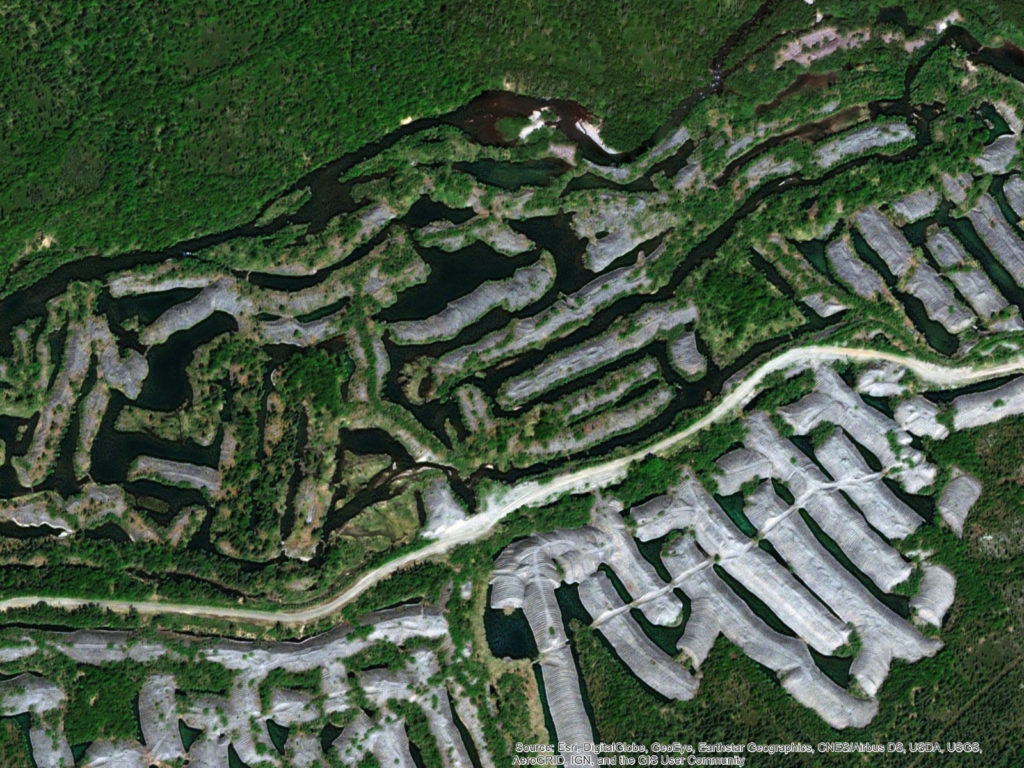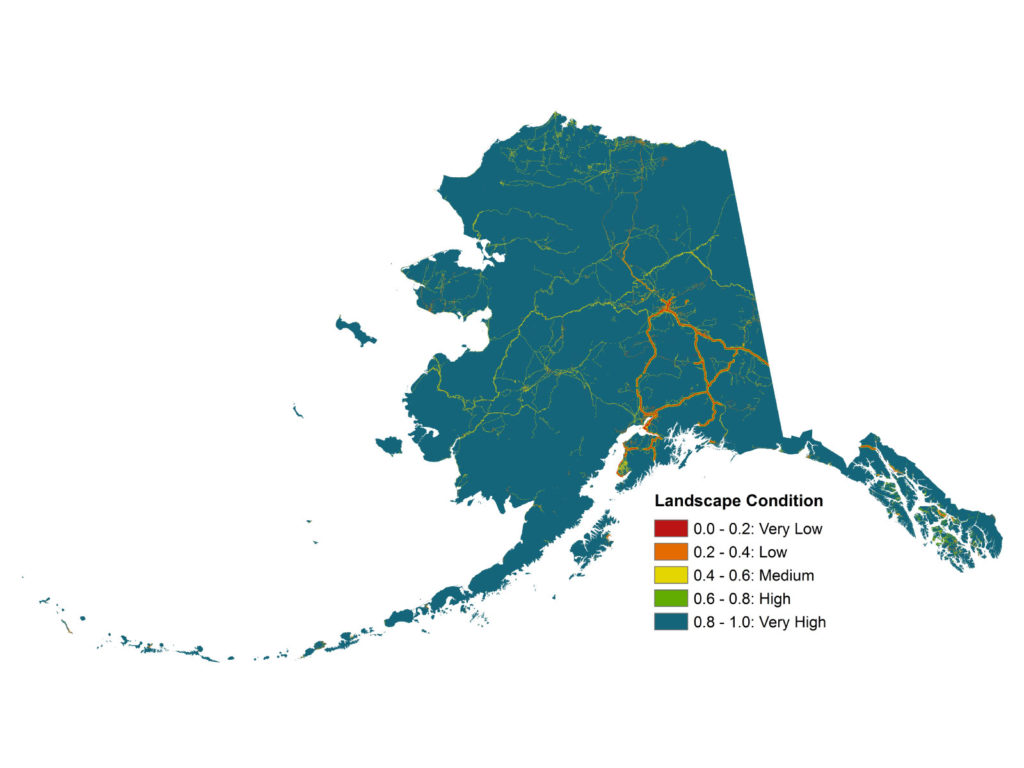Landscape ecologists at ACCS have a big picture perspective seeking to develop statewide datasets that are informed by the best available local sources. With partners across Alaska, we have established standardized statewide datasets for a variety of applications, including an assessment of landscape condition, a stream temperature monitoring network (AKOATS), a vegetation plots database (AKVEG), and continuous foliar cover maps of vegetation components across arctic and boreal Alaska. Our statewide geospatial syntheses inform future management decisions and provide a scientific baseline for effective biological conservation.
Anthropogenic Footprint
Understanding the current and historical extent of human development is an important component to effectively managing ecosystems. Habitat loss and fragmentation are the leading causes of species loss globally, and although Alaska is thought to be primarily intact, the location and intensity of development can have important impacts on local and regional resources. We work cooperatively with resource management agencies to test and ultimately implement systems that better measure and monitor cumulative impacts at meaningful scales.

In 2010, the Bureau of Land Management (BLM) initiated seven Rapid Ecoregional Assessments (REAs) to understand the condition of western landscapes. REAs are rapid in nature, using existing data synthesized over an 18-month period. They also encompass broad geographic regions, crossing several different administrative boundaries.
REAs are intended to answer important management questions, collect and develop distribution maps for key resource values, document potential impacts from environmental influences, identify science gaps, and provide baseline data for future management decisions. These assessments evaluate current landscape conditions and predict future conditions based on the potential effects of environmental influences such as wildfire, invasive species, and human development.
For more information on REAs, check out the ACCS Data Catalog, where you can find both the North Slope Rapid Ecoregional Assessment and Central Yukon Rapid Ecoregional Assessment.

